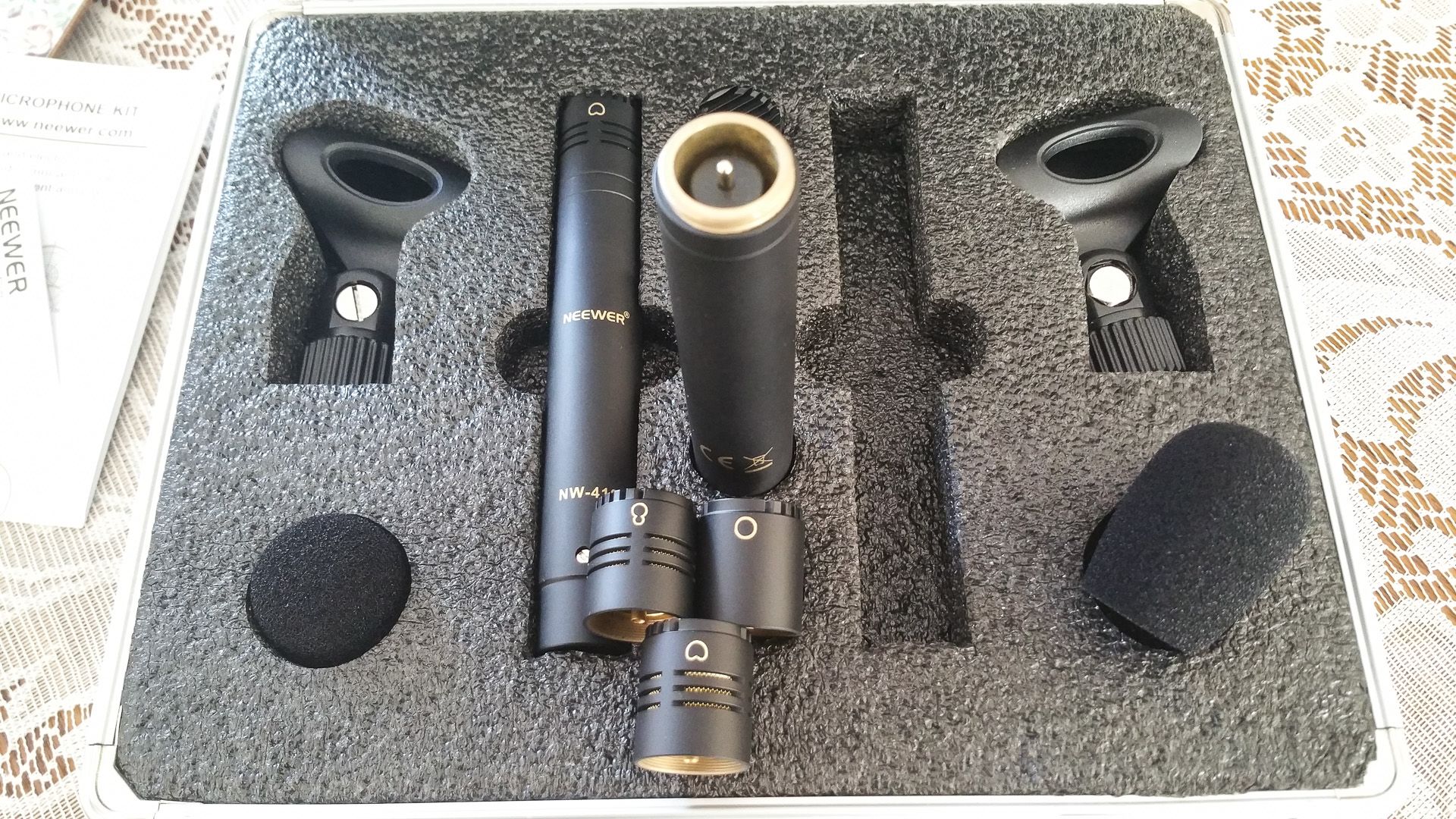September 18, 2019
A new addition to my kit. I was looking around for a small condenser mic that was affordable and ended up finding something quite nice!
I had a pair of wonderful large condenser mics (sE4400a) but I was always looking for something that would assist me with making better dialog audio for my videos, and a small condenser mic hung up over my head out of the shot looked like a great option.
What ended up arriving at my home was a matched pair of Neewer NW-410 mics. Yes, I know, my last Neewer mic purchase was a bottom of the barrel condenser mic that was far from having good quality results, but in looking at the specs, these newer Neewer (lol) are in a different class and a little time on YouTube supported this fact (and they are also 5 times more expensive than the first Neewer mics were!).
In doing some quick test recordings, I was pleasantly surprised and I feel that these mics not only make good audio dialog mics, but some very good mics to capture music with! Indeed, I can see them being part of a very complex 4 microphone setup to create some very advanced acoustic accordion audio captures! Where the sE4400a condensers capture the high dynamic range, the smaller condensers capture the transients and when placed together have the makings of some incredible recordings!
This is going to be a project for the future, but in the meantime, these mics will serve multiple duties and for that, I feel these are a perfect match for my needs.
Here are a few pictures:






The mics come as a matched pair with some small wind screens, a nice mic holder and something very interesting, each mic comes with 3 interchangeable heads that change the polar patterns from omni-directional to cardioid to supercardioid. Playing with the different heads, one can really tell the differences. I can see using the supercardioid when recording voice and cardioid when recording music instruments. The omni head is going to be used in circumstances when I need to capture something like perhaps more than 1 person talking with one mic, in circumstances where I need to capture a broader area.
Enjoy!
December 14, 2019
Yesterday I setup the Panasonic GH5s on top of the Zoom F4 on a tripod and as mics used these Neewer mics. It was as a test run rehearsal for one of my niece’s viola recitals. This one a little special in that this is the year-end recital for the teacher of my niece and she needed to know how she sounds on her setup.
The part that I recorded was only a 10 minute area of two instruments, a violin (my niece’s partner) and her on the viola, but the sound quality was very pleasing. The location is a church, a vast one with TONS of reverb, so getting the mics close to the musicians was very important. I did manage to get them to within 4 feet, so that is nice.
I did have a few concerns… Violins/violas are not very loud, but I did not want to even come close to coming near the 0 mark, so I topped them up at -24db for the majority of their song and then I set up dual recording on the F4 (a new option since the last firmware). This is where sounds on mics #1 and #2 are captured at whatever levels you set them at and the same tracks are captured on tracks #3 and #4, but I set them up at 14db lower. That way, I get good sound capture of the instruments but much lower/safer levels are captured if the pianist gets all excited or when people start to dd loud applause after a performance.
That was not the hard part… this church is basically a typical church, meaning it HEAVILY back-lights the performers, who basically look like pure black shadows on an overexposed background. I am going to have to do some heavy post processing on the final film, but I think the equipment that I have will do it’s best to help me out (the GH5s is the best low-light camera that Panasonic has in a micro 4/3 sensor size).
I plan to find out in a few hours how well it all comes together.
December 15, 2019
Well, just wow.
The mics performed very admirably! The sound was clear and very minimal echo from the location, even when at a couple of times in the show the players moved back about 15-20 feet further back on to a raised section of the stage, as opposed to where the rest of the performers were located (much closer to the mics). There was minimal sound degradation, all I had to do was raise volume levels a little to compensate. Now, they don’t sound as good as the more expensive mics that I have… but for the cost, they are fantastic!